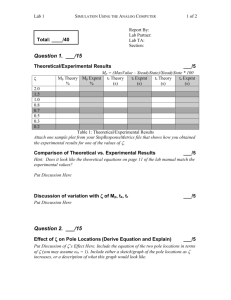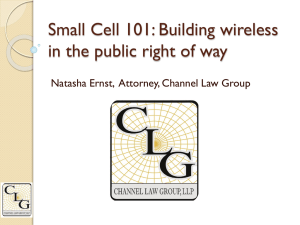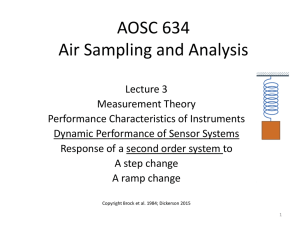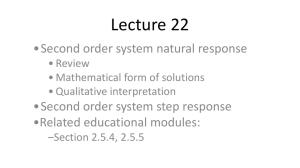Summary for time response In this chapter, we found the output
advertisement
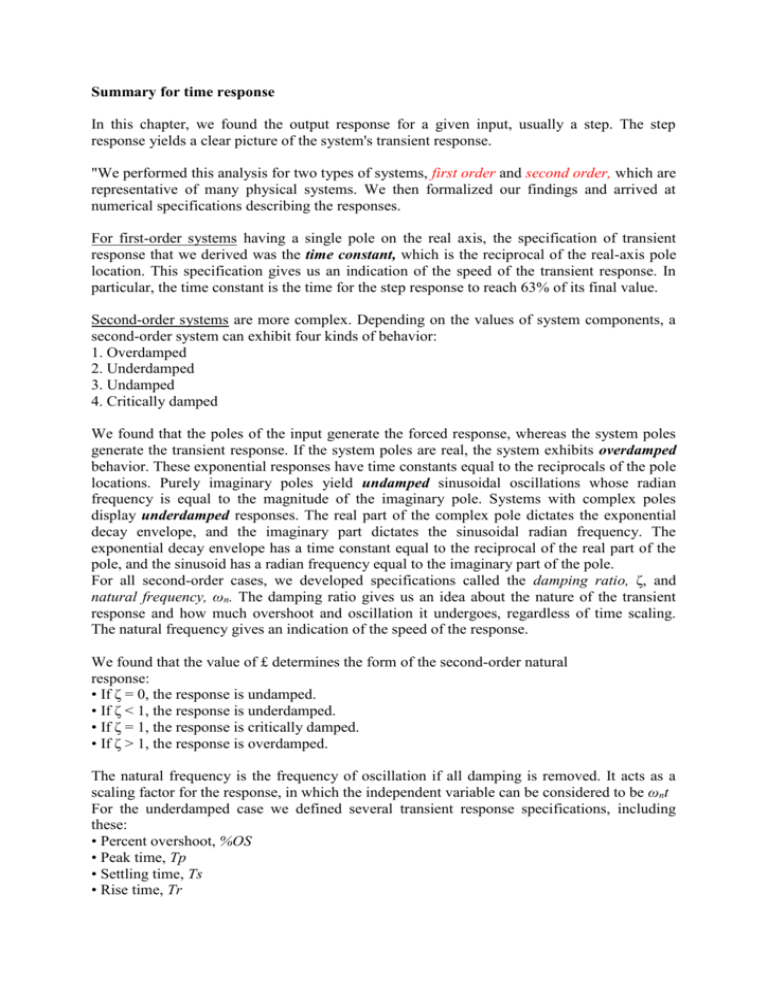
Summary for time response In this chapter, we found the output response for a given input, usually a step. The step response yields a clear picture of the system's transient response. "We performed this analysis for two types of systems, first order and second order, which are representative of many physical systems. We then formalized our findings and arrived at numerical specifications describing the responses. For first-order systems having a single pole on the real axis, the specification of transient response that we derived was the time constant, which is the reciprocal of the real-axis pole location. This specification gives us an indication of the speed of the transient response. In particular, the time constant is the time for the step response to reach 63% of its final value. Second-order systems are more complex. Depending on the values of system components, a second-order system can exhibit four kinds of behavior: 1. Overdamped 2. Underdamped 3. Undamped 4. Critically damped We found that the poles of the input generate the forced response, whereas the system poles generate the transient response. If the system poles are real, the system exhibits overdamped behavior. These exponential responses have time constants equal to the reciprocals of the pole locations. Purely imaginary poles yield undamped sinusoidal oscillations whose radian frequency is equal to the magnitude of the imaginary pole. Systems with complex poles display underdamped responses. The real part of the complex pole dictates the exponential decay envelope, and the imaginary part dictates the sinusoidal radian frequency. The exponential decay envelope has a time constant equal to the reciprocal of the real part of the pole, and the sinusoid has a radian frequency equal to the imaginary part of the pole. For all second-order cases, we developed specifications called the damping ratio, ζ, and natural frequency, ωn. The damping ratio gives us an idea about the nature of the transient response and how much overshoot and oscillation it undergoes, regardless of time scaling. The natural frequency gives an indication of the speed of the response. We found that the value of £ determines the form of the second-order natural response: • If ζ = 0, the response is undamped. • If ζ < 1, the response is underdamped. • If ζ = 1, the response is critically damped. • If ζ > 1, the response is overdamped. The natural frequency is the frequency of oscillation if all damping is removed. It acts as a scaling factor for the response, in which the independent variable can be considered to be ωnt For the underdamped case we defined several transient response specifications, including these: • Percent overshoot, %OS • Peak time, Tp • Settling time, Ts • Rise time, Tr The peak time is inversely proportional to the imaginary part of the complex pole. Thus, horizontal lines on the s-plane are lines of constant peak time. Percent overshoot is a function of only the damping ratio. Consequently, radial lines are lines of constant percent overshoot. Finally, settling time is inversely proportional to the real part of the complex pole. Hence, vertical lines on the s-plane are lines of constant settling time. We found that peak time, percent overshoot, and settling time are related to pole location. Thus, we can design transient responses by relating a desired response to a pole location and then relating that pole location to a transfer function and the system's components. Review Questions 1.Name the performance specification for first-order systems. Time constant 2. What does the performance specification for a first-order system tell us? The time for the step response to reach 63% of its final value 3. In a system with an input and an output, what poles generate the steady-state response? The input pole 4. In a system with an input and an output, what poles generate the transient response? The system poles 5. The imaginary part of a pole generates what part of a response? The radian frequency of a sinusoidal response 6. The real part of a pole generates what part of a response? The time constant of an exponential response 7. What is the difference between the natural frequency and the damped frequency of oscillation? Natural frequency is the frequency of the system with all damping removed; the damped frequency of oscillation is the frequency of oscillation with damping in the system. 8. If a pole is moved with a constant imaginary part, what will the responses have in common? Their damped frequency of oscillation will be the same. 9. If a pole is moved with a constant real part, what will the responses have in common? They will all exist under the same exponential decay envelop. 10. If a pole is moved along a radial line extending from the origin, what will the responses have in common? They will all have the same percent overshoot and the same shape although differently scaled in time. 11. List five specifications for a second-order underdamped system. ζ, ωn, TP, %OS, Ts 12. For Question 11 how many specifications completely determine the response? Only two since a second-order system is completely defined by two component parameters 13. What pole locations characterize (1) the underdamped system, (2) the overdamped system, and (3) the critically damped system? (1) Complex, (2) Real, (3) Multiple real 14. Name two conditions under which the response generated by a pole can be neglected. Pole's real part is large compared to the dominant poles, (2) Pole is near a zero
